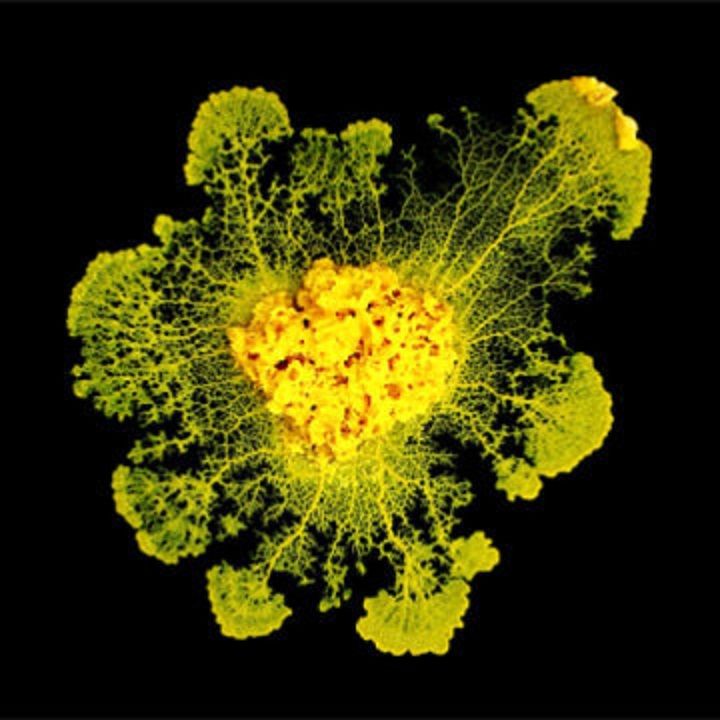
Can organisms without brains or neurons learn? You bet.
A paper published April 27 in the journal Proceedings of the Royal Society B shows that one species of slime mold—a primitive organism made up of single cells which can bunch together and move around—can learn and remember. This life-form evolved before neurons and brains came on the scene, suggesting that learning predates the development of these structures. Exactly how slime molds learn is as yet unclear.
"What's interesting about slime molds is they appear to be simple, because there is only one cell, but they are capable of amazing stuff, things that we thought were only possible with nervous systems or brains," study lead author Romain Boisseau, a master's student in evolutionary biology at Ecole Normale Superieure in Paris, told the Los Angeles Times.
In the study researchers set up little bridges between a slime mold called Physarum polycephalum and a tasty oatmeal treat. Under normal conditions, the slimemold bunched together and moved across the bridge to the food. But then, the scientists coated the bridges with caffeine or quinine, both bitter substances that the organism generally avoids, but which aren't harmful in small quantities. At first, the slime mold avoided the bridge, but then found a way across by "tip-toeing," extending a long thin tendril of itself across and then speedily moving the rest of its body over the bitter bridge.
Over the course of several days, however, the slime mold appeared to learn that these substances weren't actually harmful, and after about a week, moved across the bridges as if they had no substance on them. To show that the changing behavior was indeed caused by learning, and not by something like a cellular aversion to a caustic chemical, the researchers exposed the slimemold to a second bitter substance (swapping caffeine-covered bridges for those slathered with quinine, and vice versa). Sure enough, the slime mold reacted to the substance as if it were new, and then gradually learned that it wasn't necessary to avoid the stuff.
Plants, which have no known neural cells or brains, can also learn and remember. Research by Monica Gagliano, a scientist at the University of Western Australia, has shown that a species called Mimosa pudica normally closes its leaves when disturbed. But this is costly because it prevents the plant from harnessing energy and producing food from light. In a monumental 2014 study, Gagliano showed that after being dropped a short distance many times, these plants eventually realize the disruption is a benign one. In other words, the jolt wasn't followed by their leaves being nibbled or any kind of harm—and so they did not have to close their leaves. Even a month later, after being left unperturbed, the plants "remembered" not to close when they were dropped.
Uncommon Knowledge
Newsweek is committed to challenging conventional wisdom and finding connections in the search for common ground.
Newsweek is committed to challenging conventional wisdom and finding connections in the search for common ground.
About the writer
Douglas Main is a journalist who lives in New York City and whose writing has appeared in the New York ... Read more
To read how Newsweek uses AI as a newsroom tool, Click here.








